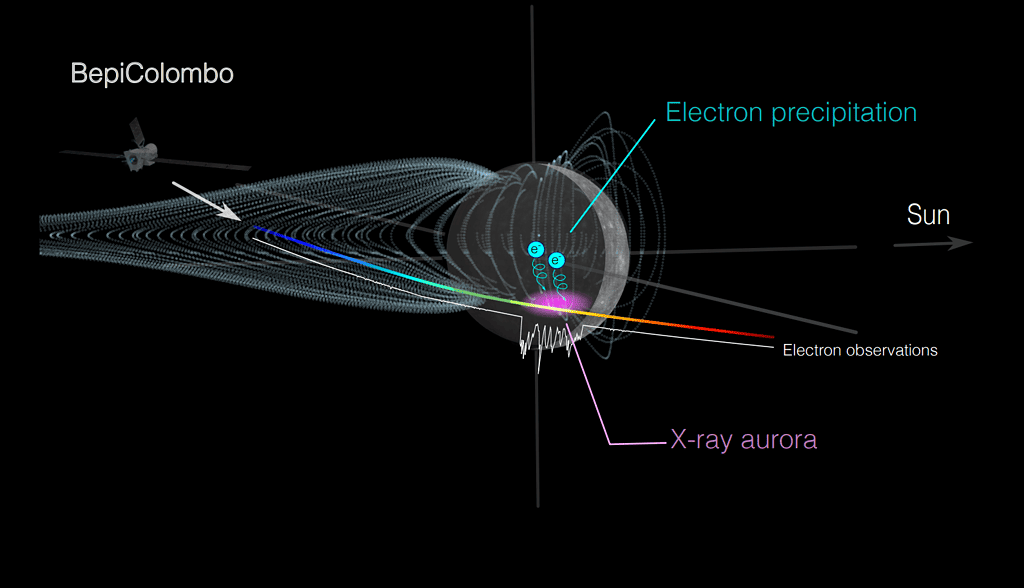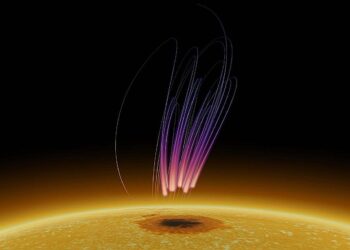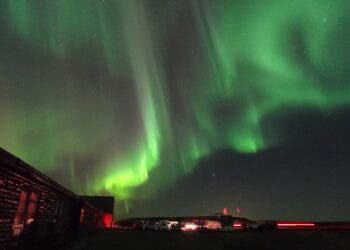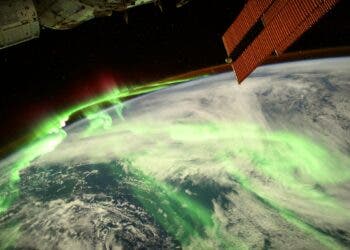
The mechanism responsible for generating aurorae in planetary magnetospheres, commonly known as the Northern and Southern Lights, might be universal across the Solar System, and perhaps even the Universe.
The new study unveils data obtained from the BepiColombo mission‘s initial encounter with Mercury. It reveals striking similarities between the aurorae observed on Mercury’s southern magnetosphere and those witnessed on Earth and Mars.
Universal auroras
Mercury possesses a magnetosphere—a region surrounding the planet governed by its magnetic field. Within this magnetic domain, rapid reconfigurations have been observed, occurring in response to magnetic reconnection with the solar wind. These reconfiguration cycles resemble the processes witnessed around other celestial bodies such as Earth, Jupiter, Saturn, and Uranus.
Until now, however, our understanding of these cycles has been predominantly limited to observations of Mercury’s northern magnetosphere, pertaining to the types of particles detected and the range of energies observed.
A team of researchers led by Sae Aizawa, a postdoctoral researcher at the Institute of Space and Astronautical Science (ISAS) in Japan and Pisa University, set out to delve into this cosmic enigma by analyzing concurrent measurements of low-energy electrons (below 30 kiloelectron volts) and ions during the BepiColombo mission’s maiden flyby of Mercury in October 2021.

Their efforts bore fruit, as they uncovered direct evidence that energetic electrons undergo acceleration within the near-tail region of Mercury’s magnetosphere. Subsequently, these electrons swiftly drift toward the planet’s dayside and are injected onto closed magnetic field lines on the planetary nightside. This mesmerizing process manifests as X-ray aurorae—a dazzling display of luminosity.
“I believe that it is not just our Solar System but also any other exo-solar systems where there is the magnetic field from its host star and/or at any planets,” Aizawa told ZME Science.
“Observing auroras in these systems is crucial as it provides valuable insights into the composition of their atmospheres, especially in cases where there is a thick atmosphere, or alternatively, when X-ray fluorescence from the surface indicates the absence of a thick atmosphere. Furthermore, studying these auroras helps us understand the plasma processes occurring in these distant systems.
What makes this revelation particularly intriguing is the suggestion put forth by the authors that this mechanism, involving electron injections and energy-dependent drift, is not confined to Mercury alone.
“These observations reveal that electron injections and subsequent energy-dependent drift now observed throughout the Solar System is a universal mechanism that generates aurorae despite the differences in structure and dynamics of the planetary magnetospheres,” the authors write.
Previously, scientists believed that the intricate dance of charged particles leading to aurora creation was unique to individual planets, shaped by the idiosyncrasies of their magnetospheres. Now, we know this is not true.
“We can apply the lessons we have learned from studying auroras and their mechanisms in our Solar System to these exoplanetary systems,” Aizawa said. “Therefore, identifying common physical mechanisms or features shared with our solar system becomes essential.”
The findings appeared in the journal Nature Communications.






